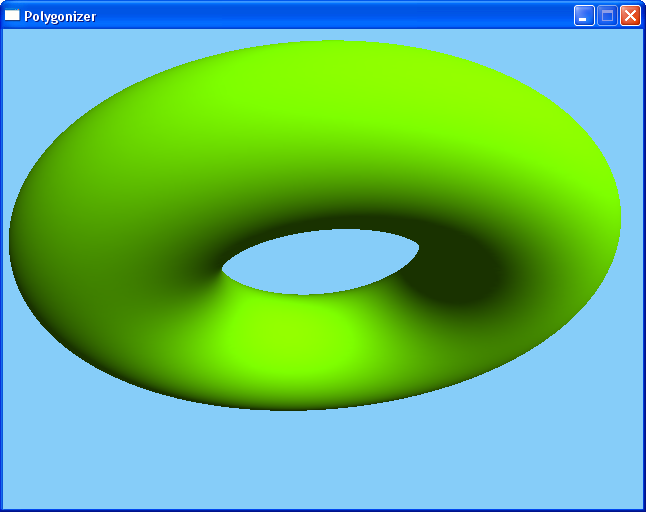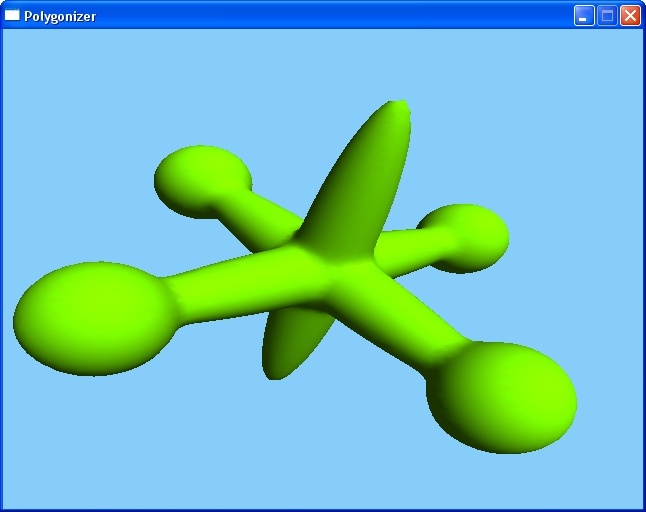
Jules Bloomenthal wrote an article about an implicit surface polygonizer. I've ported his C program to Lisp. If you want to execute the polygonizer, you'll need lispbuilder-sdl, cl-opengl and optionally the Infix package for easier entering mathematical formulas.
The polygonizer calculates the surface of a function. A point is on the surface of a function if the function value for this point is 0. A simple example is a torus:
(defun torus (x y z)
"a torus"
(let* ((major 2.5)
(minor 1.2)
(x2 (* x x))
(y2 (* y y))
(z2 (* z z))
(a (+ x2 y2 z2 (* major major) (- (* minor minor)))))
(- (* a a) (* 4.0 (* major major) (+ y2 z2)))))
Then we define a callback function, which is called by the polygonizer for every triangle it creates:
(defun triangle (p1 p2 p3 n1 n2 n3) (incf *triangle-count*) (gl:begin :triangles) (gl:normal (point-x n1) (point-y n1) (point-z n1)) (gl:vertex (point-x p1) (point-y p1) (point-z p1)) (gl:normal (point-x n2) (point-y n2) (point-z n2)) (gl:vertex (point-x p2) (point-y p2) (point-z p2)) (gl:normal (point-x n3) (point-y n3) (point-z n3)) (gl:vertex (point-x p3) (point-y p3) (point-z p3)) (gl:end))
After initializing OpenGL, we call the polygonizer:
(polygonize #'torus 0.10 100 0.0 0.0 0.0 #'triangle TET)
The output:

For more complex functions, like this one from the paper:

it is easier to use the Infix package, if you are not a hardcore Lisp programmer, to write it like this:
(defun jack (x y z)
#I"(1/(x^^2/9+4*y^^2+4*z^^2)^^4
+1/(y^^2/9+4*x^^2+4*z^^2)^^4
+1/(z^^2/9+4*y^^2+4*x^^2)^^4
+1/((4*x/3-4)^^2+16*y^^2/9+16*z^^2/9)^^4
+1/((4*x/3+4)^^2+16*y^^2/9+16*z^^2/9)^^4
+1/((4*y/3-4)^^2+16*x^^2/9+16*z^^2/9)^^4
+1/((4*y/3+4)^^2+16*x^^2/9+16*z^^2/9)^^4)^^(-1/4)-1")
This produces the following surface:
